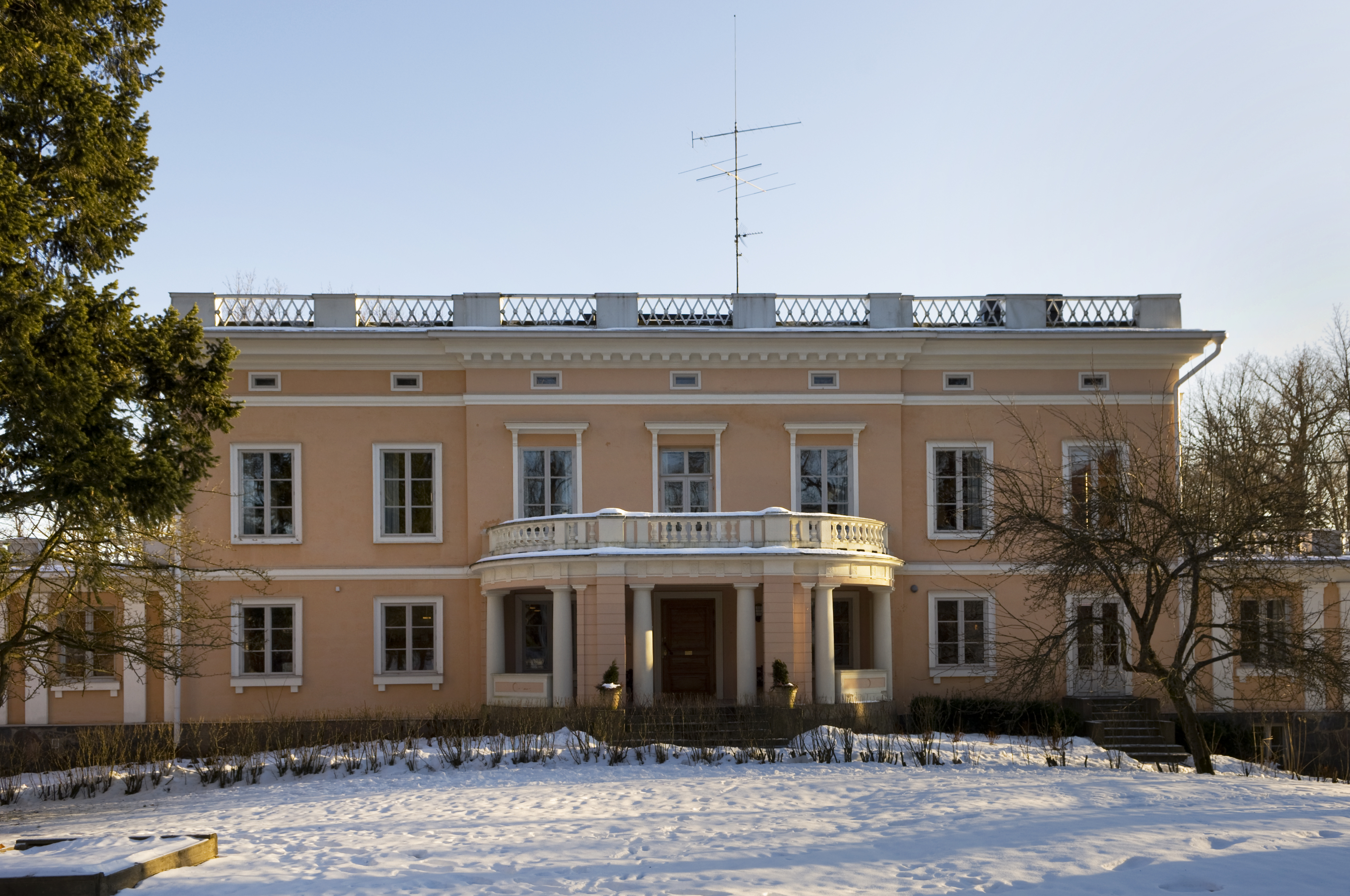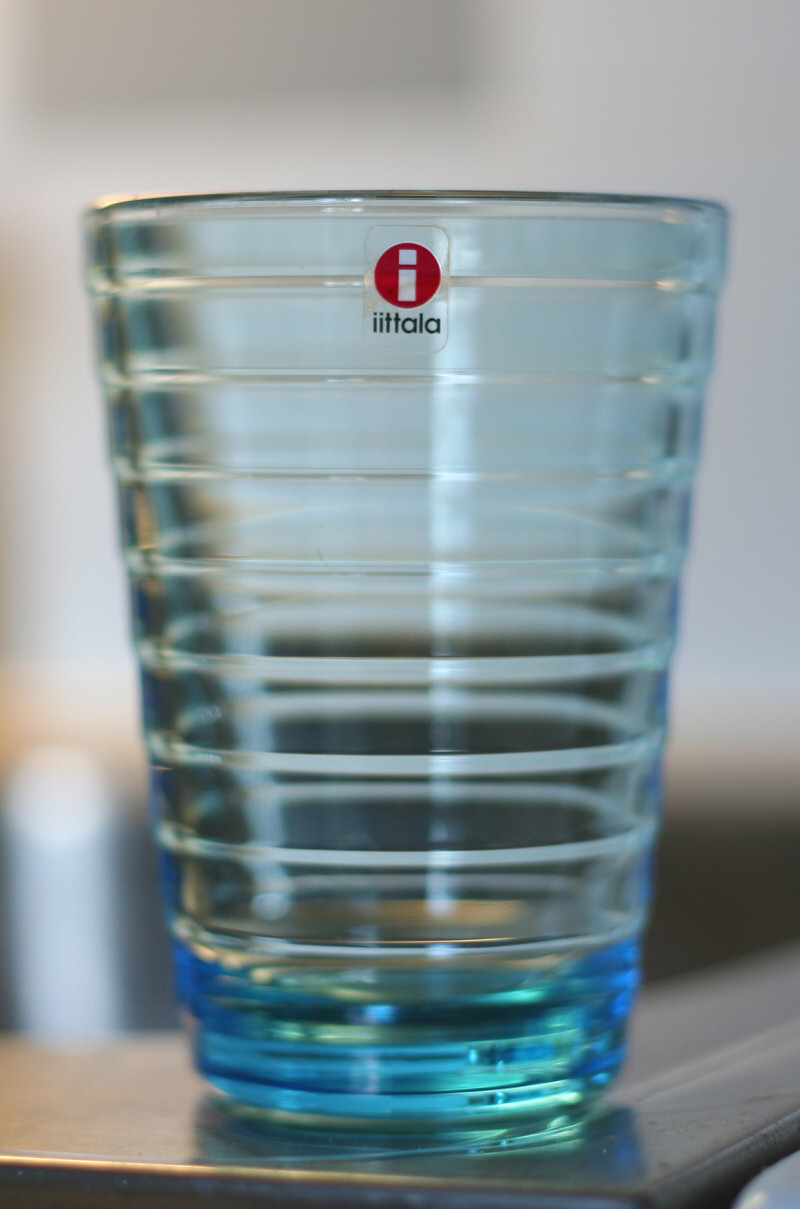|
Villa Aalto
The Aalto House, the home of academician Alvar Aalto, is located in Munkkiniemi, Helsinki, Finland at 20, Riihitie. The house is part of the Alvar Aalto Museum, which functions in two cities, Jyväskylä and Helsinki. The other location in Helsinki where the museum functions is Studio Aalto, which is located ca. 450 metres from the house, at Tiilimäki 20. Background Aalto became acquainted with Munkkiniemi and developed a liking of it when he was drafting a proposition for building along the shores of Laajalahti Bay for the company of M.G. Stenius. The proposition never materialised; it would have meant that the shores would have been lined with long, white apartment buildings. However, in 1934 Aino and Alvar Aalto acquired a lot in Munkkiniemi, in a place that was still nearly in its natural state, and designed for the lot a house which was completed in August 1936, roughly at the same time as the Viipuri Library. When the house was under construction, passers-by are said to ... [...More Info...] [...Related Items...] OR: [Wikipedia] [Google] [Baidu] |
Munkkiniemi
Munkkiniemi ( sv, Munksnäs, Helsinki slang: ''Munkka'') is a neighbourhood in Helsinki. Subdivisions within the district are Vanha Munkkiniemi, Kuusisaari, Lehtisaari, Munkkivuori, Niemenmäki and Talinranta. The land in Munkkiniemi was from the 17th century a part of Munksnäs manor. In the 1910s grandiose plans were made to expand all of western Helsinki with tens of thousands of new inhabitants, the so-called Munkkiniemi–Haaga Plan by Eliel Saarinen. The construction of the new areas started slowly and it wasn't until the 1930s that a more extensive construction phase began in Munkkiniemi. From 1920 to 1946 Munkkiniemi was part of Huopalahti municipality. Huopalahti including Munkkiniemi was incorporated with Helsinki in 1946. Munkkiniemi is one of the more affluent areas of Helsinki. Characterized by the relatively high proportion of Swedish speakers, around twelve percent, and a socioeconomic structure heavy on upper management and professionals, the district is apprecia ... [...More Info...] [...Related Items...] OR: [Wikipedia] [Google] [Baidu] |
Aino Aalto
Aino Maria Marsio-Aalto (born Aino Maria Mandelin; 25 January 1894 – 13 January 1949) was a Finnish architect and a pioneer of Scandinavian design. She is known as a co-founder of the design company Artek and as a collaborator on its most well-known designs. As Artek's first artistic director, her creative output spanned textiles, lamps, glassware, and buildings. It has been discovered that it was Aino who completed the first work commissioned through Artek which was the Viipuri Library in 1935. Her work is in the permanent collection of the Museum of Modern Art (MoMA) in New York,and the MoMA has included her work in nine exhibitions. Aino Aalto’s first exhibition was ''Art in Progress: 15th Anniversary Exhibitions: Design for Use'' at MoMA in 1944. Other major exhibitions were at the Barbican Art Gallery in London and Chelsea Space in London. Aino Aalto has been exhibited with Pablo Picasso. Biography Aino Mandelin was born in Helsinki. Her family lived in a co-operative ... [...More Info...] [...Related Items...] OR: [Wikipedia] [Google] [Baidu] |
Modernist Architecture In Finland
Modernism is both a philosophy, philosophical and arts movement that arose from broad transformations in Western world, Western society during the late 19th and early 20th centuries. The movement reflected a desire for the creation of new forms of art, philosophy, and social organization which reflected the newly emerging industrial society, industrial world, including features such as urbanization, architecture, new technologies, and war. Artists attempted to depart from traditional forms of art, which they considered outdated or obsolete. The poet Ezra Pound's 1934 injunction to "Make it New" was the touchstone of the movement's approach. Modernist innovations included abstract art, the stream-of-consciousness novel, montage (filmmaking), montage cinema, atonal and twelve-tone music, divisionist painting and modern architecture. Modernism explicitly rejected the ideology of Realism (arts), realism and made use of the works of the past by the employment of reprise, incorpor ... [...More Info...] [...Related Items...] OR: [Wikipedia] [Google] [Baidu] |
Landmarks In Finland
A landmark is a recognizable natural or artificial feature used for navigation, a feature that stands out from its near environment and is often visible from long distances. In modern use, the term can also be applied to smaller structures or features, that have become local or national symbols. Etymology In old English the word ''landmearc'' (from ''land'' + ''mearc'' (mark)) was used to describe a boundary marker, an "object set up to mark the boundaries of a kingdom, estate, etc.". Starting from approx. 1560, this understanding of landmark was replaced by a more general one. A landmark became a "conspicuous object in a landscape". A ''landmark'' literally meant a geographic feature used by explorers and others to find their way back or through an area. For example, the Table Mountain near Cape Town, South Africa is used as the landmark to help sailors to navigate around southern tip of Africa during the Age of Exploration. Artificial structures are also sometimes built to a ... [...More Info...] [...Related Items...] OR: [Wikipedia] [Google] [Baidu] |



